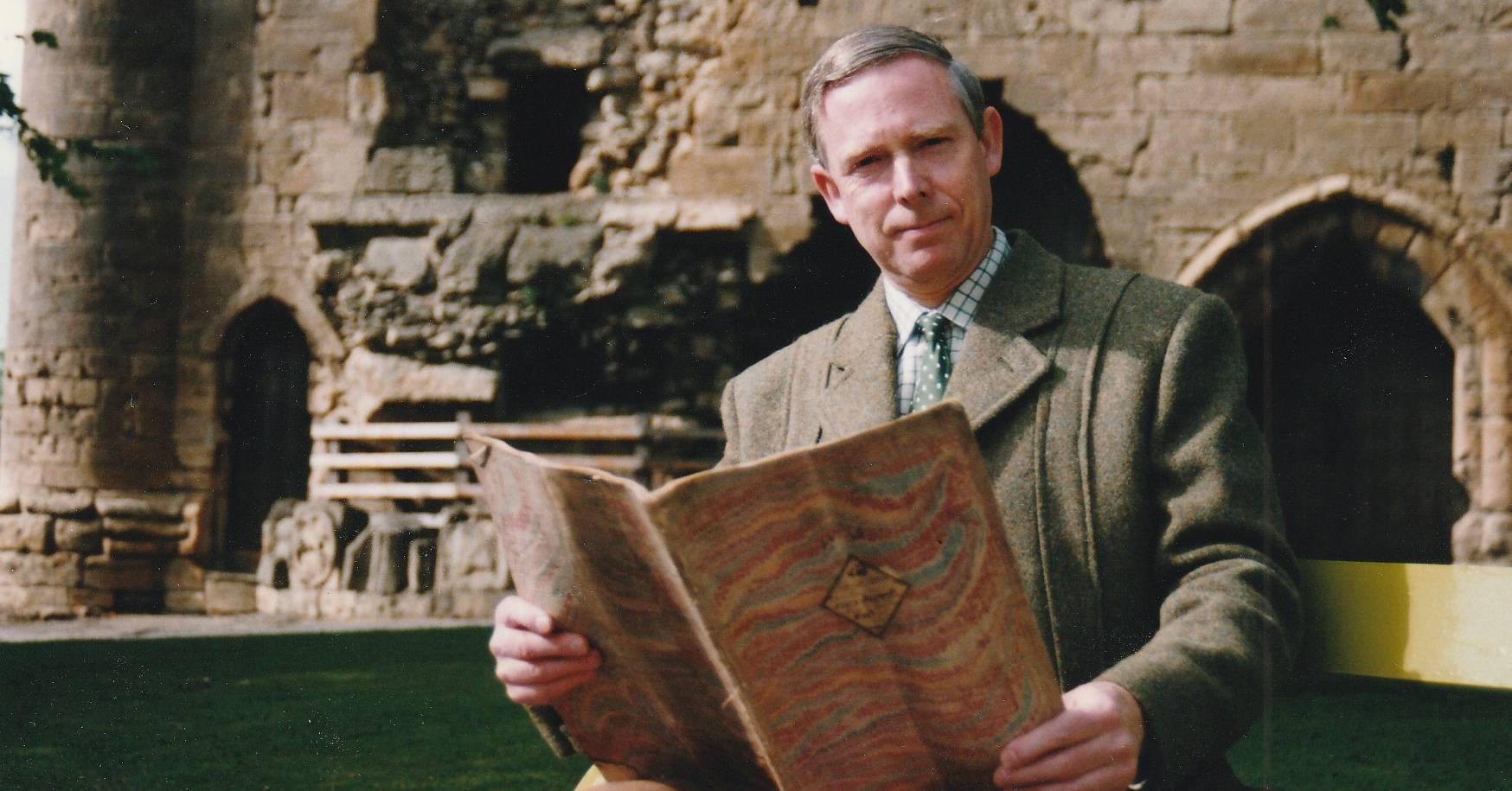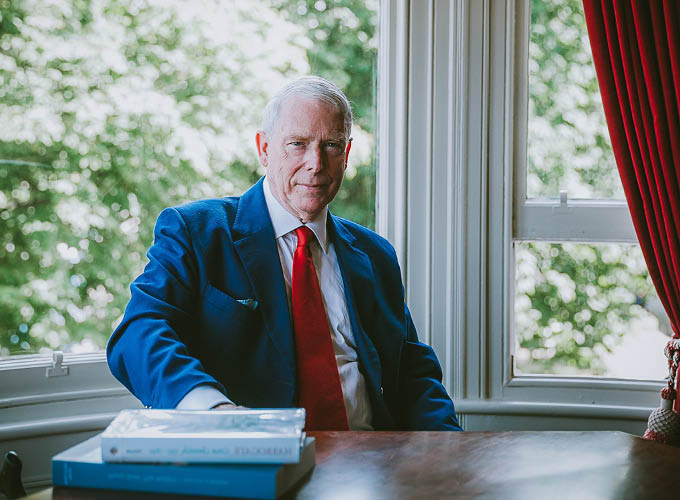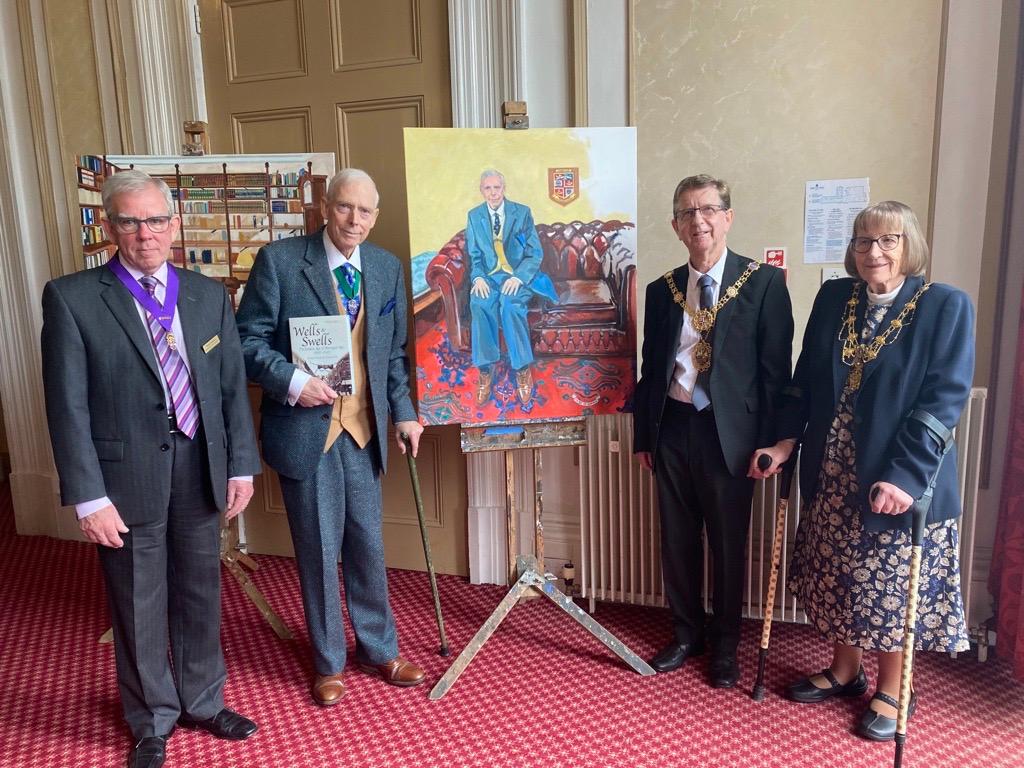Subscribe to trusted local news
In a time of both misinformation and too much information, quality journalism is more crucial than ever. By subscribing, you can help us get the story right.
- Subscription costs less than £1 a week with an annual plan.
Already a subscriber? Log in here.
02
Jul 2022
Obituary: Malcolm Neesam 1946-2022

It is doubtful whether anyone has known more about Harrogate’s people and places than Malcolm Neesam, who died on his 76th birthday this week.
Malcolm, who wrote about a dozen books and numerous other publications about the town, dedicated much of his life to telling Harrogate's story. He did it better than anyone and will be remembered as the town's greatest historian.
He had an encyclopedic knowledge of the buildings and people that shaped Harrogate but he was also gentle and modest, and never boastful or condescending in print or real life.
Underpinning it all was a deep love for the town, and in particular the Stray.
Born in a nursing home on Ripon Road in Harrogate on June 28, 1946, Malcolm's father worked for a rubber company that manufactured soles for footwear.
Sunday afternoon walks with his mother stimulated his interest in history at the age of six or seven. She would often talk about things they passed. "I didn’t need a playground," he once said. "I had the Stray."
He attended St Peter's Church of England Primary School, "a very happy little school", as he described it, and then Christ Church Secondary School for Boys. The school, which was situated between the Empress roundabout and Christ Church on the Stray, amalgamated with St Peter’s Secondary School for Girls to create St Aidan’s Church of England High School more than 50 years ago. Retirement flats now occupy the site.
In his last year at Christ Church, Malcolm's parents noticed an advert for an assistant at Harrogate library and thought his developing interest in history would make him suitable.

Photographed in London in 1988. Pic by Benedict Hess
After three years in that role he accepted a post at Leeds University studying archives and librarianship. He later attributed his thoroughness at gathering source material for books to his training as an archivist.
Malcolm then moved to Hereford for four-and-a-half years to set-up the city's first children’s library service before moving further south to Northwood, in the London borough of Hillingdon close to the Metropolitan line, to work as an archivist for the Duchy of Lancaster.
Music librarian
He did this for three years before going to York, shortly before local government reorganisation in 1974, to become city music librarian.
But when reorganisation changed everything, Malcolm was offered a post by the new local authority as county music librarian, which involved buying music for county library services. Being a great lover of classical music, he was perfectly suited.
He stayed in York until 1996, overseeing new methods of administration, storage and repairs as technology changed and vinyl was replaced by cassettes and then CDs in North Yorkshire libraries. All the time he commuted from Harrogate.
He admired York's decision to effectively pull out of North Yorkshire local government and become independent in the 1990s. Malcolm hated the trend towards ever more remote forms of local government, which will culminate in the creation of North Yorkshire Council next year and the abolition of seven district councils, including Harrogate Borough Council. He felt the more decision-making left Harrogate, the more the town lost control of its wealth and character.
Read more:
- Tributes paid to 'Mr Harrogate' Malcolm Neesam
- Harrogate historian Malcolm Neesam dies
- Harrogate Club honours local historian Malcolm Neesam
In 1996 he received an offer to work for an American company called Alumni Holidays, which arranged holidays for former university students.
He had done some guiding in York, which proved useful in his new role in which he gave lectures on subjects such as Scarborough, York and the Yorkshire Dales, Yorkshire architecture and Yorkshire literature. Alumni Holidays was horrified by his initial omission of James Herriot so the author was eventually added to his list of topics.

Malcolm worked for the company on a freelance basis for 10 years but the Madrid train bombing in 2004 severely disrupted business by leaving many Americans too afraid to travel to Europe.
Full-time writer
In 2006 he decided to concentrate on writing full-time. He had written short stories at school but didn't let anyone see them. His writing career had begun in 1973 when the Library Association commissioned him to write a guide to children’s sci-fi called Into Space. It went to nearly every library in the country.
A founding member of the Harrogate Society, which later became Harrogate Civic Society, he was asked by local firms such as Ogden, Raworths and William Woods to write books for them. He also undertook research for plaques. His writing career, he said, "grew in stages".
Harrogate in Old Picture Postcards was published in 1992, followed by Exclusively Harrogate in 1994 and Harrogate: A History of the English Spa from the Earliest Times to the Present in 2001. His works also included a centennial history of Harrogate Grammar School in 2003.
During this time he became, in the words of Harrogate and Knaresborough MP Andrew Jones, "the chronicler of our town".
The two books of which Malcolm was proudest are Harrogate Great Chronicle 1332-1841, which was the product of 40 years work, and Wells and Swells: The Golden Age of Harrogate Spa, 1842–1923, which was published in April this year. His beloved Harrogate Club named its dining room in his honour at the book launch. By then, Malcolm was in the advanced stages of the cancer that would claim his life and it was a deeply emotional occasion at a place that meant so much to him.

Malcolm Neesam at the launch of his final book, Wells and Swells.
He started work on a third volume, covering Harrogate's history since 1923, fully aware he was unlikely to finish it.
Before Malcolm, William Grainge, who died in 1895, was considered to be Harrogate's foremost historian. Grainge had published books and short publications about the town in the 1860s and 1870s, but nothing substantial. Malcolm described Grainge's style as "too chatty" whereas he focused more on the history.
He and the late Harold Walker, a historian and one-time editor of the Harrogate Herald, set up the Walker-Neesam archive, ensuring their collective research could stay for ever within the town.
His vast collection of papers and photo library will go to Harrogate's Mercer Art Gallery. Organising them won't be an easy task: thousands of brown envelopes assigned alphabetically by subject took up an entire room at his home.
Malcolm gave a typically modest answer when asked why he only wrote about Harrogate, saying: "Some writers can turn to anything. I can only write about things that interest me."
Freedom of the Borough
Malcolm was instrumental in establishing the listing of many buildings in the town and in establishing the first conservation area. He was also the founder historian of the Harrogate Brown Plaque scheme.
He was a member of the Harrogate Club from the 1990s and adored the place and its history. Arthur Conan Doyle once played billiards there.
Harrogate Borough Council awarded him the Freedom of the Borough in 1996 for his services as a historian. He supported numerous local organisations, including Harrogate Dramatic Society and Harrogate Theatre, often sitting on their committees.
Unfailingly polite, he was nevertheless often reserved and diffident in public. He rarely talked about his private life but close friends say he had a keen sense of humour, which could border on the macabre at times, and was an excellent cook.
Besides music, he had a passion for reading, especially non-fiction history and Victorian fiction, such as Dickens, Thackeray and Jane Austin.
But his lifelong passion was Harrogate. He loved its wide streets, the Stray and shops, and felt the population was just about ideal.
He never married. His elder sister, Shirley, who had two sons, died three years ago. Malcolm's two nephews live in Burnley and East Sussex.
Asked where he was happiest, he said: "It may seem obvious but just sitting on the Stray under a tree."
Malcolm Neesam, historian and author, born June 28, 1946, died June 28, 2022
0